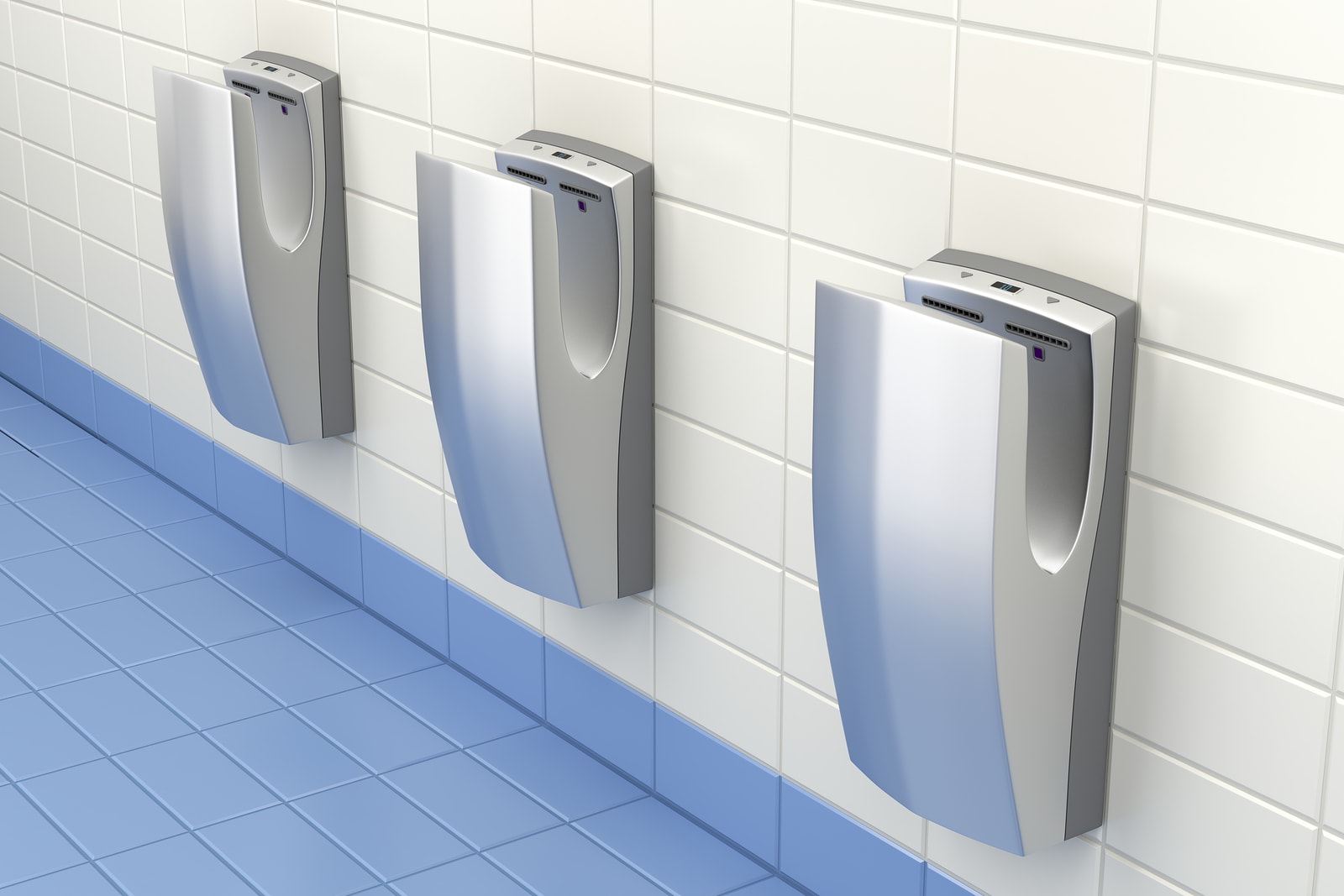
Imagine someone walking into a bathroom, doing their business and activating a jet dryer to dry their hands, and inadvertently unleashing a wave of germs into the surrounding air.
While this may sound like a scene out of a Hollywood bio-thriller, researchers from the University of Westminster in London have concluded that this is actually what happens on a daily basis when people use a means other than paper towels to dry their hands.
The researchers, Patrick Kimmitt and Keith Redway, who work in the university’s Department of Biomedical Sciences, published a study in the January 2016 edition of the Journal of Applied Microbiology examining how germs and viruses are potentially dispersed through the use of paper towels, warm air dryers and jet dryers.
The study determined that jet dryers, in particular, can disperse germs 1,300 times more than paper towels. The findings were supported by field tests where two participants dipped their hands in a harmless virus called MS2, which infects bacteria and is used as a model for the spread of non-enveloped human viruses. The researchers then used three procedures for drying their hands – paper towels, a standard warm hand dryer and a popular air jet dryer.
Methods and Results
To determine the spread and spray of potential viruses, the researchers utilized several methods. They collected air samples and placed small dishes around the bathroom. The dishes were coated with a thin layer of E. coli, which MS2 infects and kills upon contact. If particles of MS2 landed on the plate, it would leave an identifiable mark, which could then be tallied.
The researchers set up plates at six varying heights next to each drying device to simulate an adult height and the height of a small child. They also set up plates at nine other locations around the bathroom.
You Might Also Enjoy: Bone Regeneration for Healing Fractures Studied by Michigan State Veterinary Scientist
Overall, researchers found that the popular air jet dryer produced 60 times more marks than the warm hand dryer and 1,300 more marks than paper towels. When analyzing the spray dispersed by the jet dryer, they determined 70% of the spray reached the height of a small child’s face.
While most of the virus particles dispersed by the jet dryer landed less than a foot from the dryer, some particles were detected as far as 10 feet away.
Another analysis of the air samples showed that 15 minutes after use, viral particles remained in the air longer when the jet dryer was used compared to the warm hand dryer or paper towels.
Similar Studies and Conclusions
This isn’t the first time a study has been conducted on this subject. In 2014, a similar study conducted by the University of Leeds prompted a jet dryer spokesperson to say that study participants had more viruses on their hands than they normally would in a “real-world” scenario.
However, researchers are convinced of their findings.
“The results of the study suggest that in locations where hygiene and cross-infection considerations are paramount, such as healthcare settings and the food industry, the choice of hand-drying method should be considered carefully,” the authors said in a statement.









